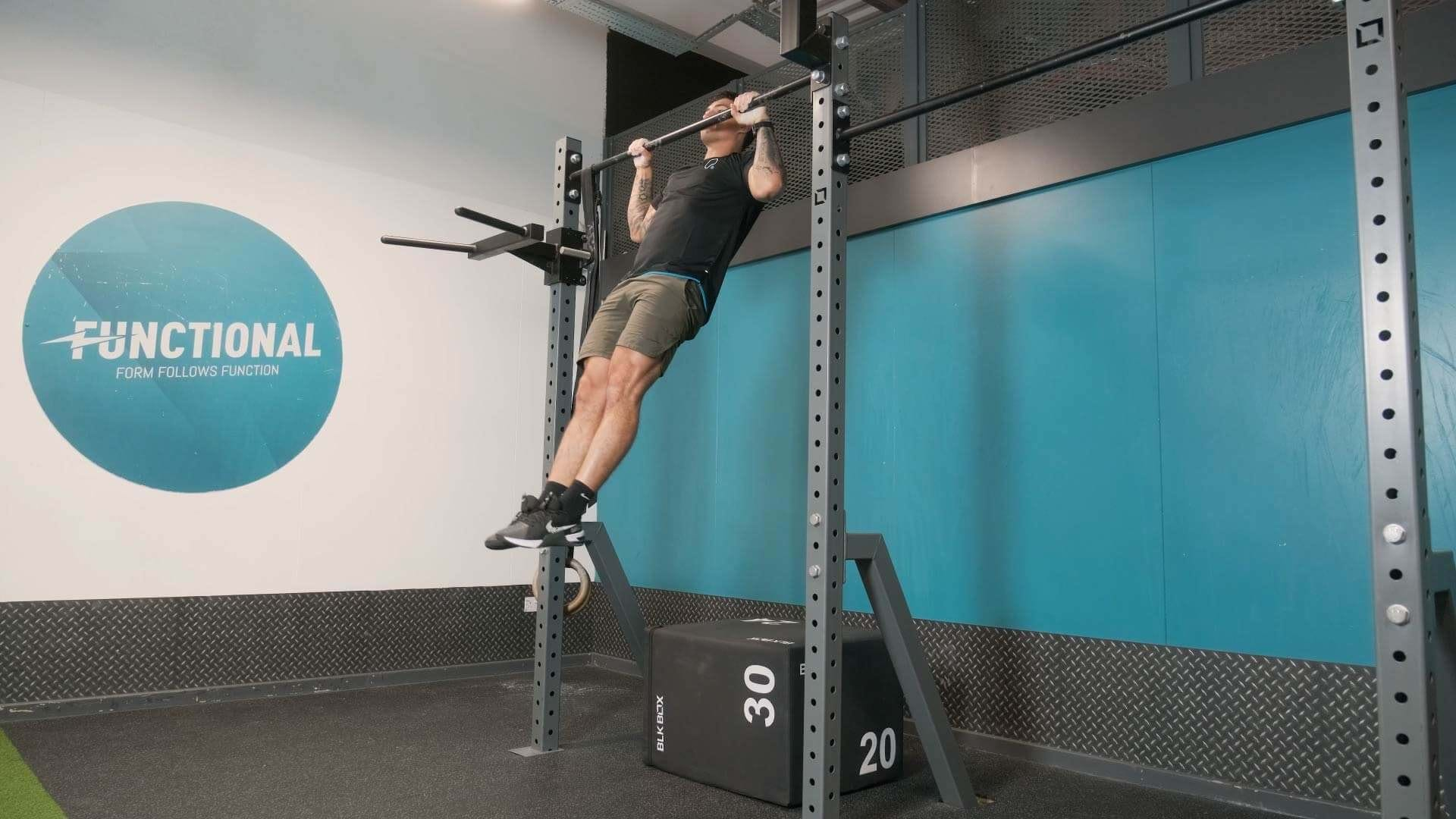Pull Ups
What are pull ups?

Pull ups are one of the most popular - and impressive - compound bodyweight exercises. In a pull up, you lift your entire body weight by holding onto an overhead bar and pulling yourself up until your chin clears the bar.
Pull ups work a lot of upper body muscles, including the back, shoulders, biceps, and even the core. The main muscles targeted in pull ups are the latissimus dorsi, trapezius, and rhomboids which give the back shape and size.
Pull ups aren't just a good way to build muscle, they are also an excellent test of bodyweight strength. They build functional upper body strength, improve forearm and grip strength, and help core stability. Pull ups are more functional than machine back exercises like lat pulldowns as they involve full body coordination, and are usually considered more challenging than chin ups, because they use a pronated (overhand) grip.
Pull ups are an intermediate or advanced exercise, and beginners should consider starting with assisted pull ups using resistance bands or the gym pull up machine. Try pairing pull ups with pressing exercises like push ups or overhead presses, or alternate pull ups with rows or face pulls for comprehensive back development.
For proper pull up technique and form tips, check out our video and explanation below.
Check out some other pull up exercises: Chin Ups, Assisted Pull Ups,
Commonly Asked Questions About Pull Ups
Pull ups primarily work the large muscles of the latissimus dorsi (lats) that give the torso its V-shape. They also engage the trapezius, rhomboids, and rear deltoids, and work the rectus abdominis and obliques in the core. Pull ups also activate smaller muscles in your forearms and hands, improving grip strength.
The main difference between pull ups and chin ups is the hand position, which alters the muscles worked. Pull ups use a pronated grip (palms facing away), and chin ups use a supinated grip (palms facing you). Pull ups work the lats and lower trapezius back muscles, making them more challenging than chin ups which engage the biceps more. Both exercises work similar muscle groups, but the slight variation in grip changes the emphasis.
Assisted pull ups using resistance bands or the gym pull up machine can help you build the strength and muscular endurance for pull ups. Lat pull downs mimic the movement pattern with adjustable resistance. Inverted rows are a great alternative to pull ups for beginners. Negative pull ups (lowering yourself slowly from the top position) help develop strength. If you’re looking for a more advanced alternative to pull ups, try weighted pull ups or one-arm pull ups for a challenge.
Pull ups build upper body strength and muscle mass, particularly in the back and arms. As a compound exercise, pull ups improve functional fitness and can improve your posture. Pull ups also work core strength and stability, improve grip strength, and contribute to a more balanced physique.
Pull Ups Tips
Use a pronated grip with your palms facing away from you, slightly wider than shoulder width apart. The further apart your arms, the more the lats take over.
Keep your core engaged throughout the entire movement.
Think about pulling your elbows in towards your waist to bring yourself up to the bar.
Lower back down with control, using your strength to control the descent.
How To Do Pull Ups
Step or jump up to take hold of a pull up bar with an overhand grip, hands wider than shoulder width apart.
Start in a dead hang position with arms extended, shoulders dropped, and feet off the floor.
Engage the core and drive your elbows down to your hips and squeeze the shoulder blades as pull your body upwards
Pause when your chin is level with or above the bar, then slowly lower back down until your arms are fully extended.
How To Do Negative Pull Ups
If you’re unable to complete a full pull up, or are struggling to increase your reps, negative pull ups can help to build the strength and control needed.
Place a box underneath the pull up bar. This should be high enough that your chin is already above the bar when standing on the box.
Grip the bar with an overhand grip, hands slightly wider than shoulder width apart.
Keeping your arms bent, pull through the elbows to engage the back muscles and step off the box so that you are in the top position of a pull up.
Engage the core to reduce swinging and slowly extend your arms, aiming to take as long as possible to fully extend.
Once you are in a full dead hang position, pause before jumping down and repeating.
If you’re not sure if any of the above exercises are suitable for you, please consult your doctor before you start it. Need guidance on how to perform the exercise? Ask a personal trainer at your gym.